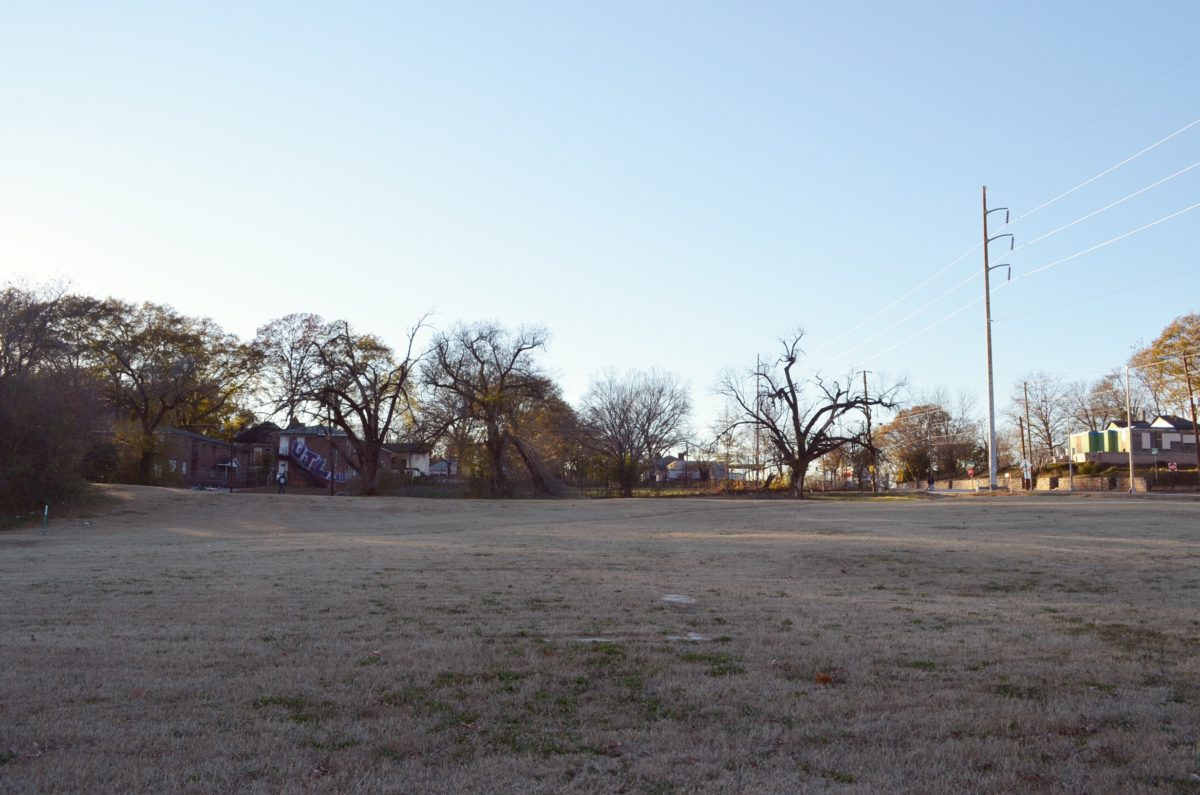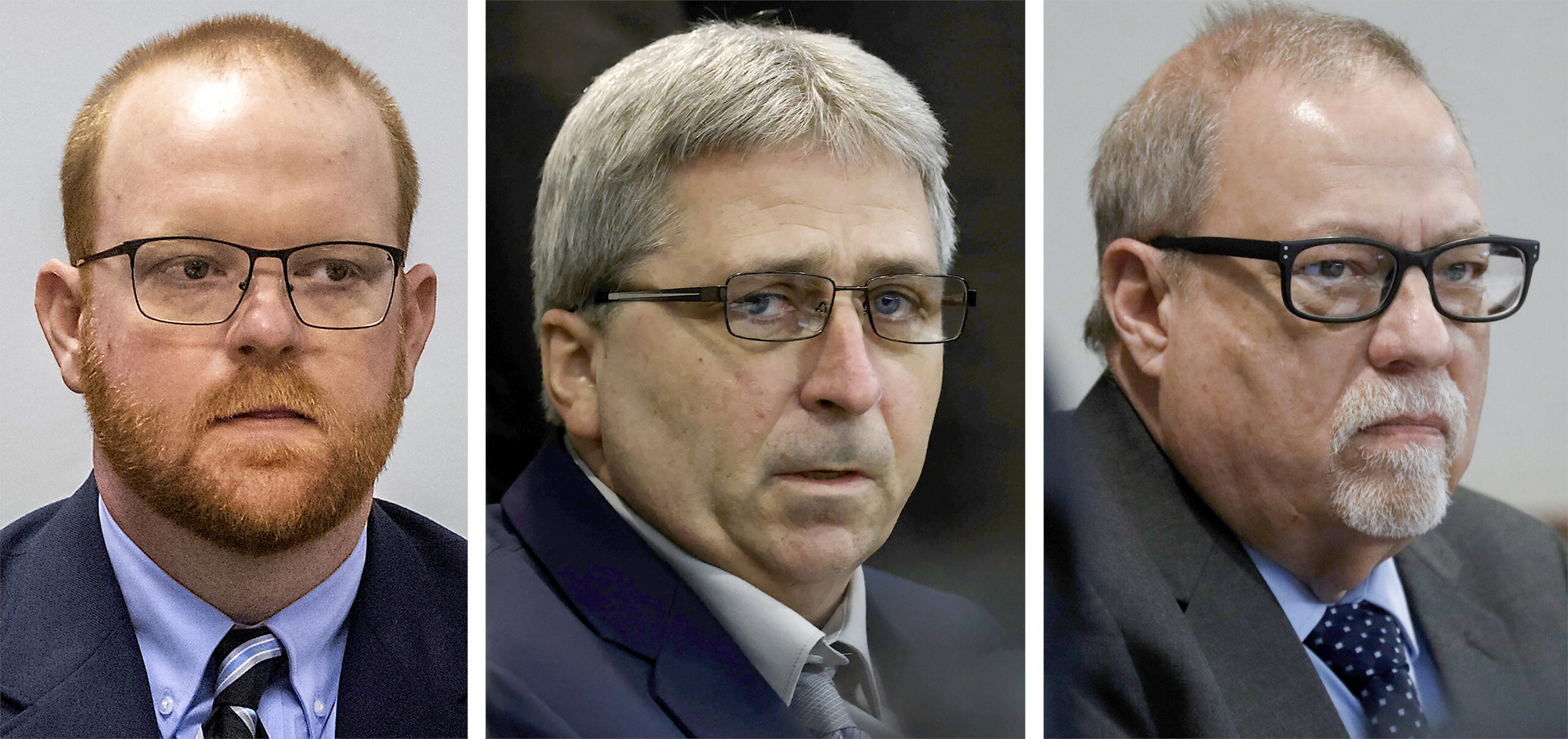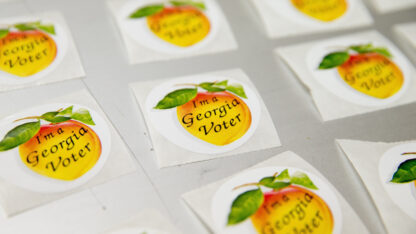Listen to the audio story.
This spring, Atlanta will start work to recreate a historic park on the city’s Westside. Local officials have high hopes for the new space, that it could even become a tourist attraction.
But the proposed park recently got caught up in Atlanta’s complicated past.
Civil Rights And Peace
In Vine City, just a mile from the new Falcons stadium, is a wide open field. There’s not much to look at, other than some trees and boarded-up apartments off to the side.
But Rodney Mims Cook Jr. has big plans to change that.
“The peace column will be about there,” Cook said.
Cook points to where a 100-foot-tall monument will stand.
“And you’ll be able to take an elevator to the top, 10 stories in the air, and so it will be very dramatic,” Cook said.
Then he looks to the other end of these 16 acres. There’s a slight hill.
“That’s where the statues of civil rights leaders will go up a series of terraces to arrive at the top,” Cook said.
He said the statues will honor civil rights leaders like Martin Luther King Jr. and Julian Bond. The two lived around the corner from here.
That’s what Cook wants this park to be about – civil rights and peace.
“I’m hopeful that with this park you’ll be able to get a big window on what that generation achieved for this country and for the world,” Cook said.
Cook is the head of an organization called the National Monuments Foundation. He’s been working to make this park a reality for more than five years.
For him, the effort is also about restoring a family heirloom.
Long ago, there was a park a few blocks east of here, designed by the sons of famous Central Park architect Frederick Law Olmsted.
It was called Mims Park, after Cook’s ancestor Livingston Mims, an Atlanta mayor around the turn of the century. And Cook hoped to use that same name for this new park.
But recently that became a problem. It was because Mayor Mims also served as a Confederate major.
Confederate Ties
“An activist called me, ‘There’s a move afoot to name a park for a Confederate major.’ And I saw that as an affront,” said Richard Rose, president of the Atlanta NAACP.
Once Rose and a few activists learned who Mims was, they called on the city to stop the park’s name.
Rose said the Confederacy fought for slavery. And a park can’t honor someone who was part of it.
“It would have portrayed white supremacy as an alternative line of thinking, which we just absolutely reject,” Rose said. “We need to bury the Confederacy.”
But to some in the mostly black community around the park space, it wasn’t so simple.
“We had settled on the park, and we were ready to move forward then all of a sudden this uproar about the name came about,” said Rev. Dexter Johnson, who leads the Vine City neighborhood association.
He said the area struggles with blight and the site of the park has been vacant for years. And here’s Cook’s foundation, ready to raise $10 million for the park’s statues.
Johnson said that changed how he and others thought about Cook’s ancestor.
“We looked at it as whatever bad he had done it was being now rectified with them wanting to come into our community and make some things right,” he said.
Dealing With History
This debate over how to represent history has come up a lot nationally, from the Confederate flag at South Carolina’s state capitol to the carving at Stone Mountain.
This story, though, is about Atlanta. And according to Ronald Bayor, a professor emeritus of history at Georgia Tech, there’s an Atlanta way of approaching the past.
“Atlanta always is very concerned about its image,” said Bayor.
Bayor, who’s also author of “Race and the Shaping of 20th Century Atlanta,” said Atlanta’s history with slavery and segregation is not the image city leaders here, white and black, want to promote.
“This is a business city. Business doesn’t come to cities that are too embedded in the past, especially if the past is a negative one,” Bayor said. “And so they want to reflect the new Atlanta, the new South.”
You can look at some of the city’s streets, which once recognized Confederate generals. Now, they’re named after civil rights leaders.
Joseph Lowery Street, which was once named for Confederate commander Turner Ashby, is one such example.
And this could also explain how the dispute over the name Mims Park ends.
City leaders approached Cook with a compromise agreed to by the neighborhood and concerned activists.
Their idea was to name the park after a different relative: his late father, Rodney Mims Cook Sr. He was a state legislator around the time of the civil rights movement, and he’s remembered for supporting it.
“The city said ‘Everyone agrees on your father, no one is finding that controversial,’” Cook said. “They said it was to bring about the peace and that’s ultimately the whole point.”
Now, the park can move forward, through a collaboration between Cook, the Trust for Public Land and the city. And the civil rights statues and peace column will eventually go up.
They’ll be on the grounds of “Rodney Cook Sr. Park,” with Mims, Cook’s middle name, left out.
Like us on Facebook

9(MDAxODM0MDY4MDEyMTY4NDA3MzI3YjkzMw004))








